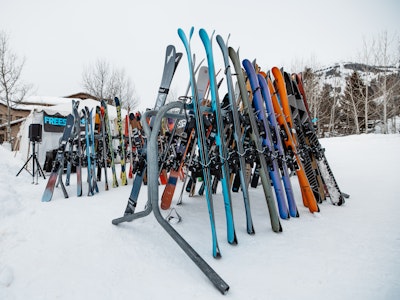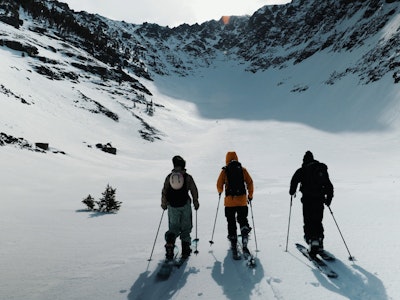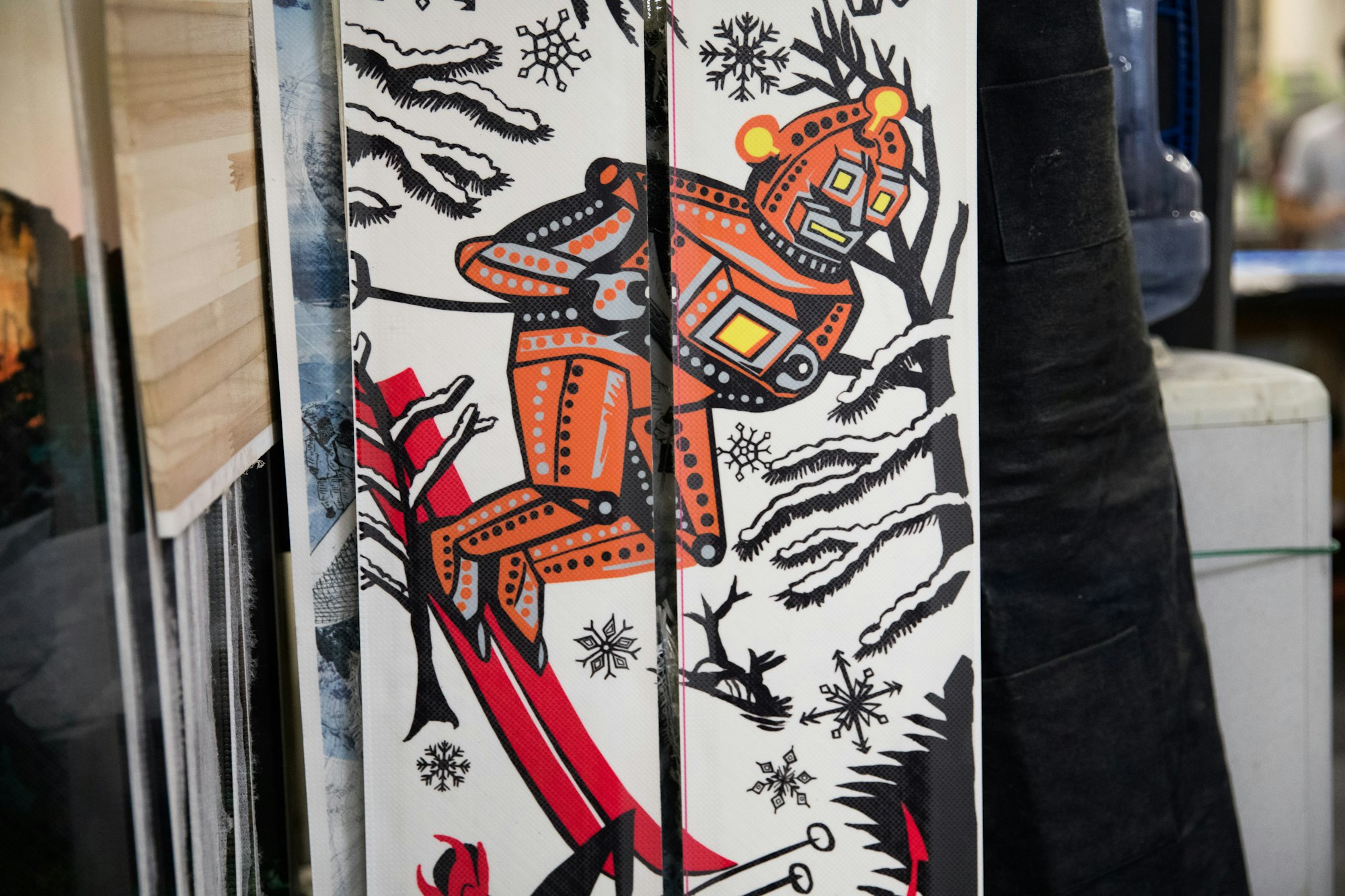INTERVIEW • SAM TAGGART | PHOTOS • Courtesy of Icelantic Skis
If you’re a fan of the band Phish, you’re going to love this interview. If you’re not into ’em, but can still appreciate a badass set of skis, then you should also keep reading. Last week, the Vermont-born jam band’s longtime friend, Jim Pollock, hopped on the phone with FREESKIER to chat about his latest project, a collaboration with Golden, Colorado-based Icelantic Skis.
Pollock, in tandem with the team at Icelantic, has created a limited-edition topsheet design that will grace a small batch of Nomad 105 skis—the brand’s best-selling planks—as well as 200 signed and certified fine art prints featuring the full artwork. The skis and prints will be available for online-only pre-sale at 10 a.m. MST on Saturday, August 31st, with delivery expected in mid-September.
Pennsylvania-born Pollock is a longtime printmaker and artist renowned in the music world—especially amongst Phish-heads—for his colorful, cartoonish concert posters. Since the late-’80s, Pollock has been honing his craft, using hands-on techniques to create caricatures of reality—think everyday characters with a folky, funny twist. He’s created linoleum-cut prints for countless Phish performances and has been selling fine art prints via his gallery for over 30 years.
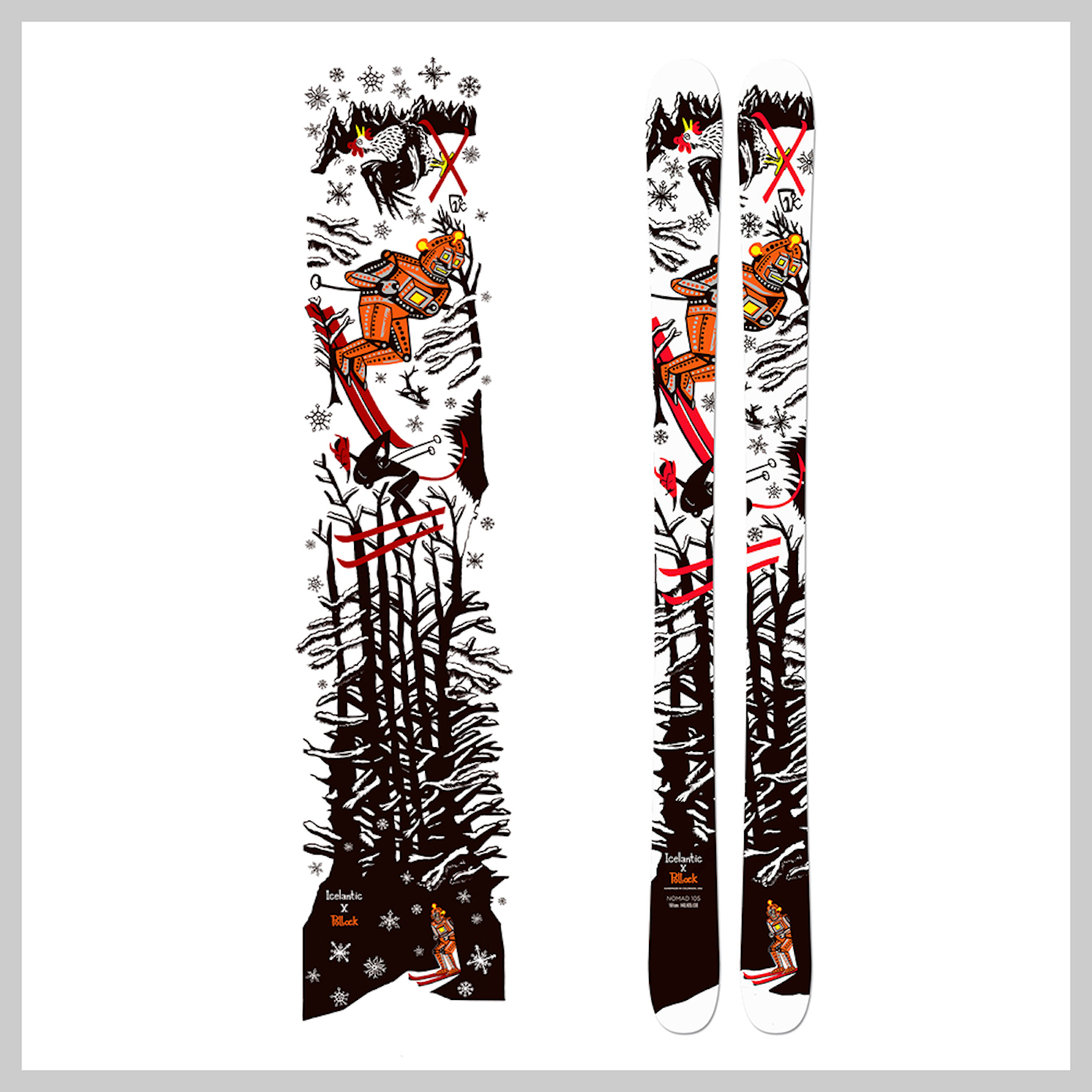
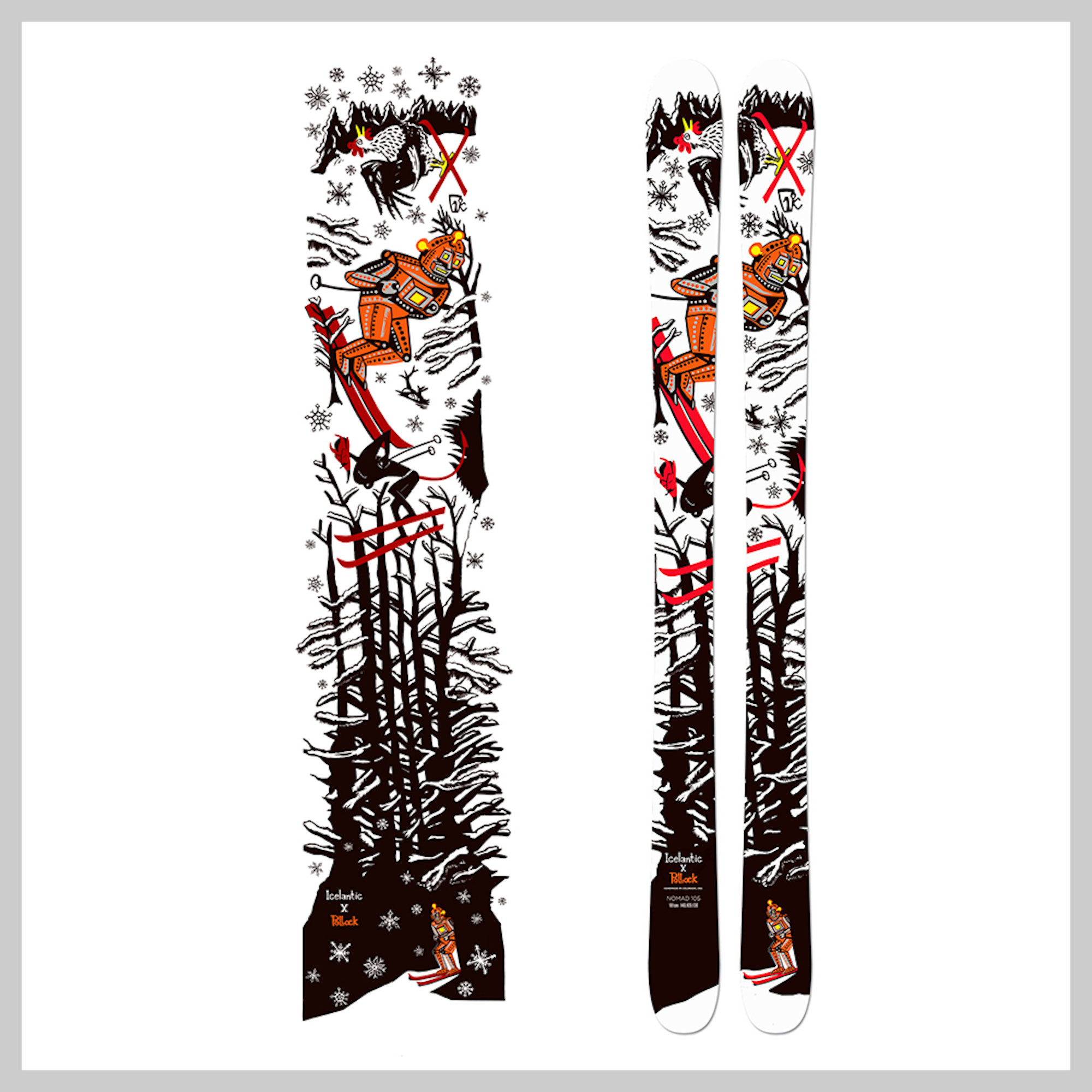
The fine art print (left) and the Nomad 105 skis (right).
These one-of-a-kind planks will make their debut during Phish’s three-night run at Dick’s Sporting Goods Park in Denver, Colorado, and ticket holders are invited to stop by the Waterwheel Foundation tent to enter to win a pair of skis or art print during any of the three concerts. The raffle will support the Waterwheel Foundation, created by Phish in 1997 to oversee the band’s various charitable activities.
FREESKIER gave Pollock a ring to get the full story behind this legendary collaboration.
How did the conversation with Icelantic start? What was your reaction to having the chance to work on a project like this?
I was very excited. I was really up for the idea of a ski. I’ve had my artwork on a snowboard [before] and I love getting my stuff into other contexts, outside of poster art. I felt this was a great opportunity for that.
In the music world, you certainly have a following. How do you view the intersection of music, skiing and art?
Like with music, I’ve taken advantage–I’ve built a whole business—on the notion of “people liking a visual context to their music.” I’ve sold a lot of posters… based on people liking that philosophy. There’s a lot of back-and-forth, where the music is feeding the visual and vice-versa. Say, someone will listen to music while they’re skiing; that’s a mixture of the same kind of things. With skiing, there’s a visual context that can be brought out more [with music].
I remember in high school—which was the early ’80s for me—there was the branding of names and simple designs [for ski brands], but nothing really out of the ordinary or visually as exciting as something you might see nowadays. I can’t help but think of skateboards feeding that [trend].
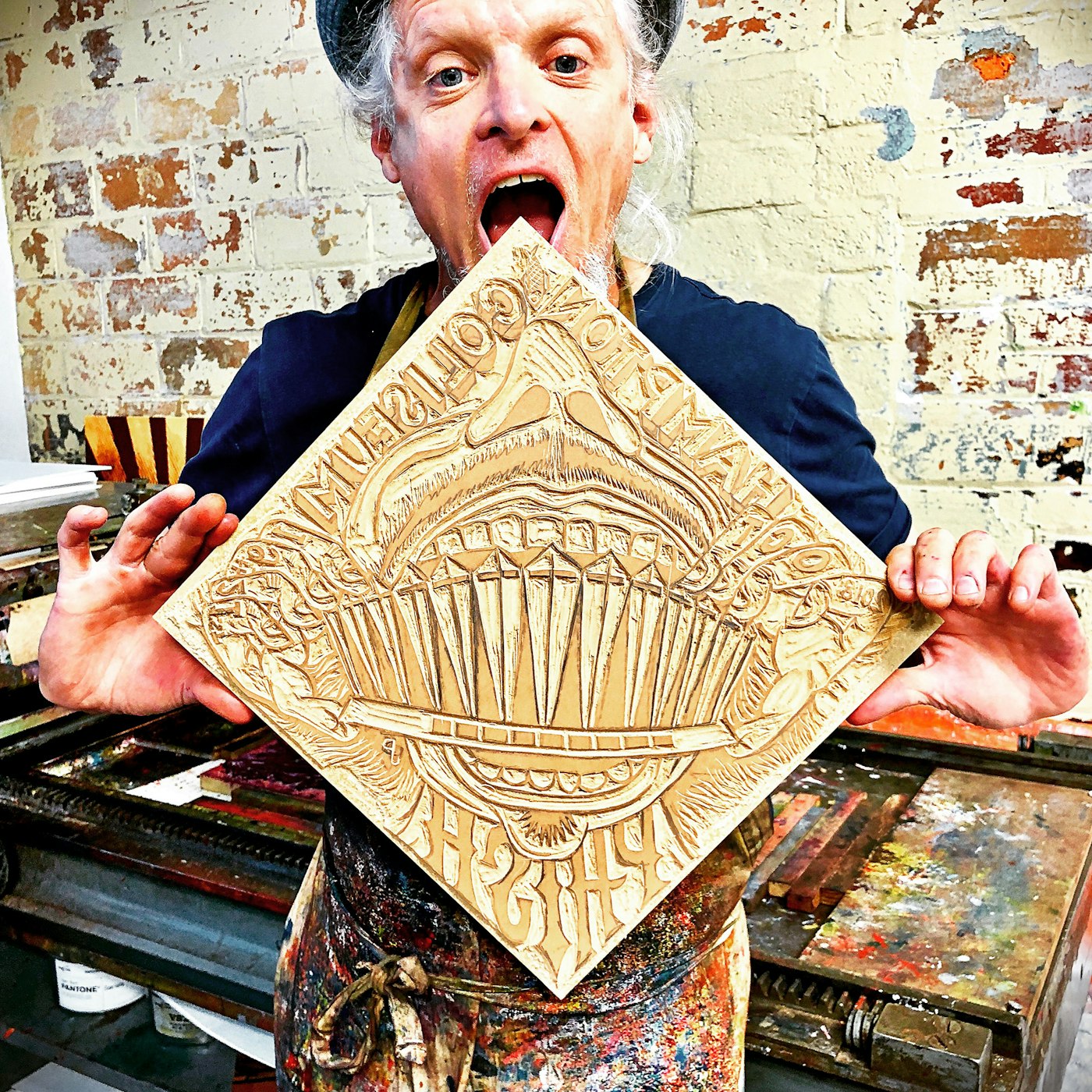
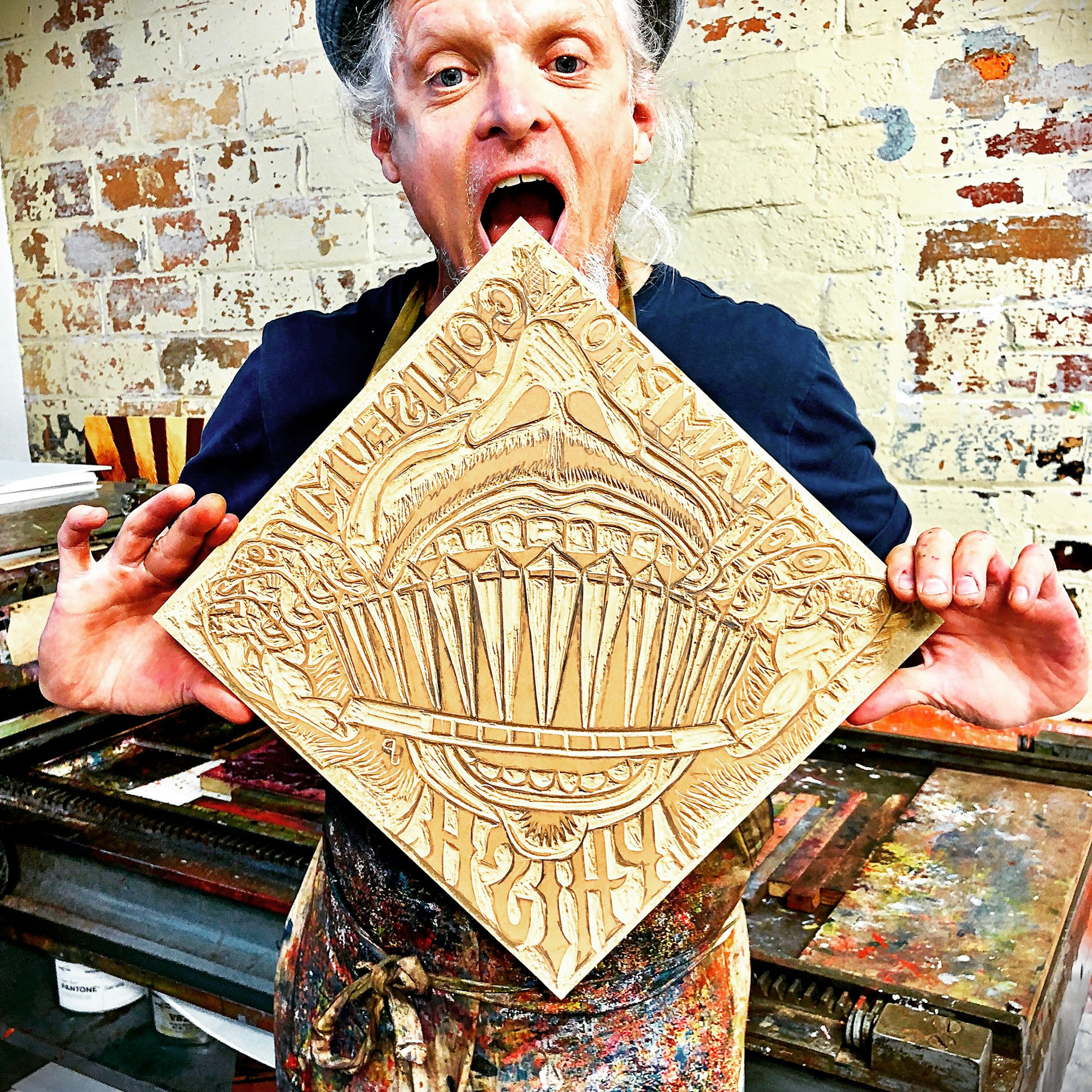
How would you describe your artistic style? Where do you find inspiration for your work?
There’s this primitive, saturated, cartoonish, narrative-driven thing going on in my art. A lot of times I’m doing linoleum prints, so I keep my figures simple to make them carve-able. My original intent when I started to do art was to be a cartoonist, like a comic strip artist; I wanted to write gag cartoons. I like to make people laugh; that always draws them in. I also get a lot of inspiration reading scientific stuff, more non-fiction these days.
What was the vision behind this collaboration with Icelantic?
Basically, Icelantic said it should be a “Return to Nature,” winter theme. I wanted to bring in characters that I’ve used in previous posters and mix them all together, so I created a winter-scape with these icons that I tend to return to—a robot, a devil and a rooster.
The robot was from a poster I made for “The Great Went,” a Phish festival that happened in 1997. The rooster was from a UIC Pavilion poster [for another Phish concert] and the devil is more of an “art print” thing that I do. I was just trying to bring back all these themes that I’ve worked with on one canvas. Thinking of the winter scene and imagining these characters all skiing, that’s always fun.
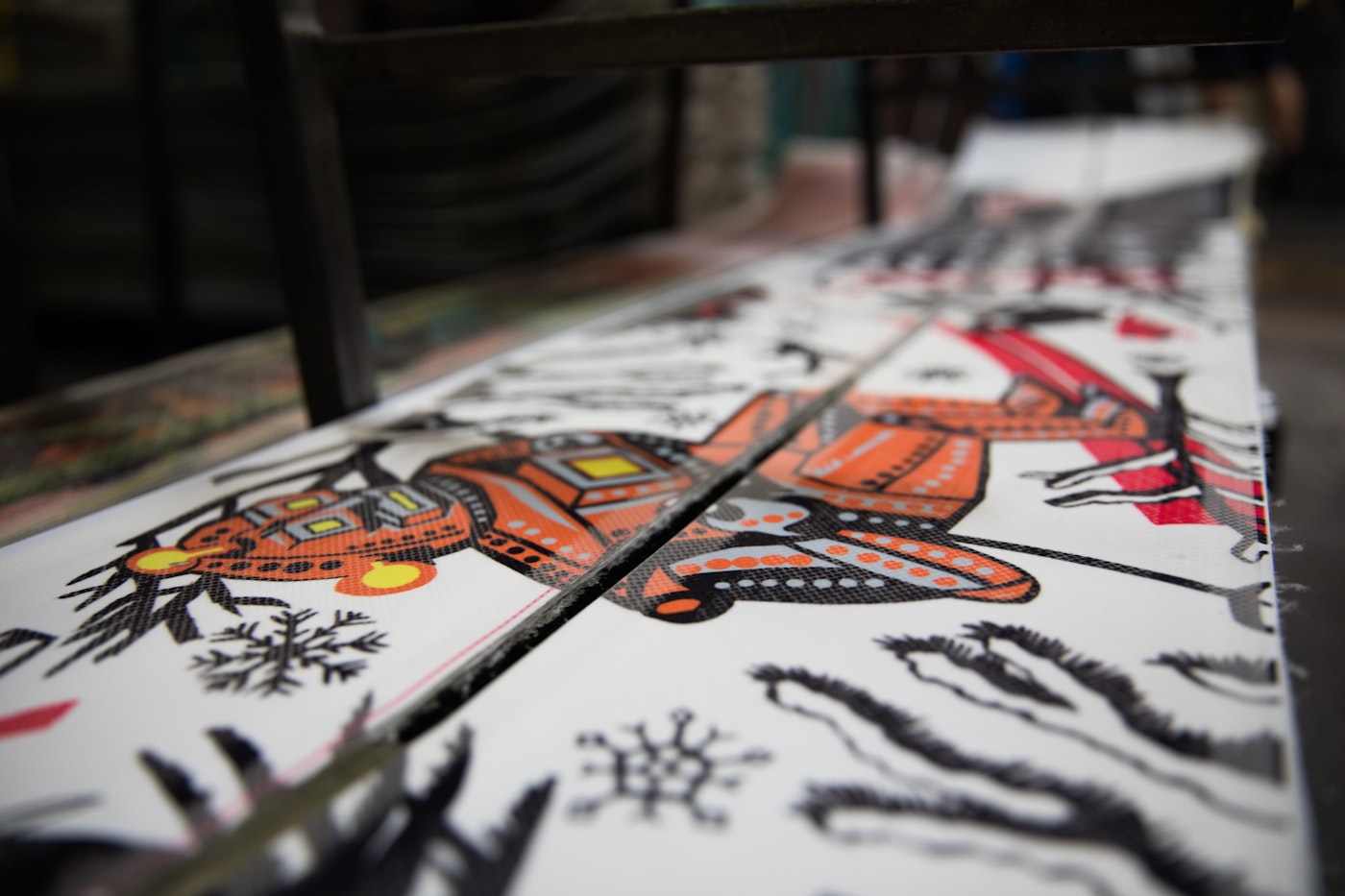
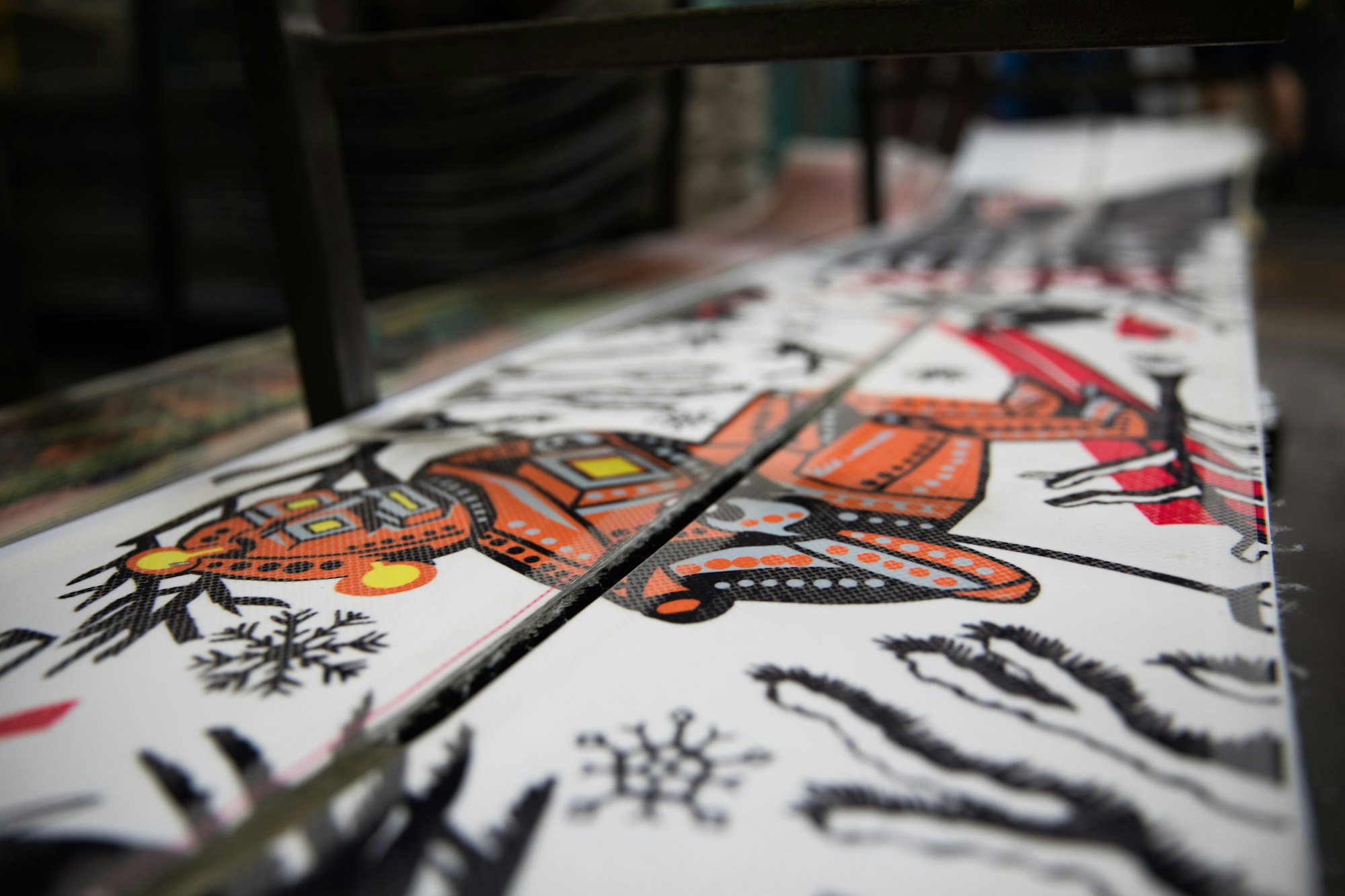
How did you initially conjure up these iconic characters?
The rooster, especially, is more from American folk art, block prints and stuff like that. A lot of times those people were making hand-made prints as well, and creating simple forms to do that. The robot, it’s almost like a paradigm: I’m carving this robot in a hand-tooled manner, and they’re not supposed to look so hand-tooled. It calls attention to my less-than-perfect lines and organic forms. And the devil is always a good return, ‘cause, you know, everyone wants to blame everything on him—he’s the “bad guy”—and I like putting him in ordinary situations.
Did you approach this project any differently than your other works?
It’s always cool to be working on something like a ski, which has an interesting form. You’re working with this stretched out plane; it’s just a canvas with a different shape than usual. I do the same thing in my printmaking, too, working with odd-shaped blocks and conceptualizing a design for something that’s not a typical print format.
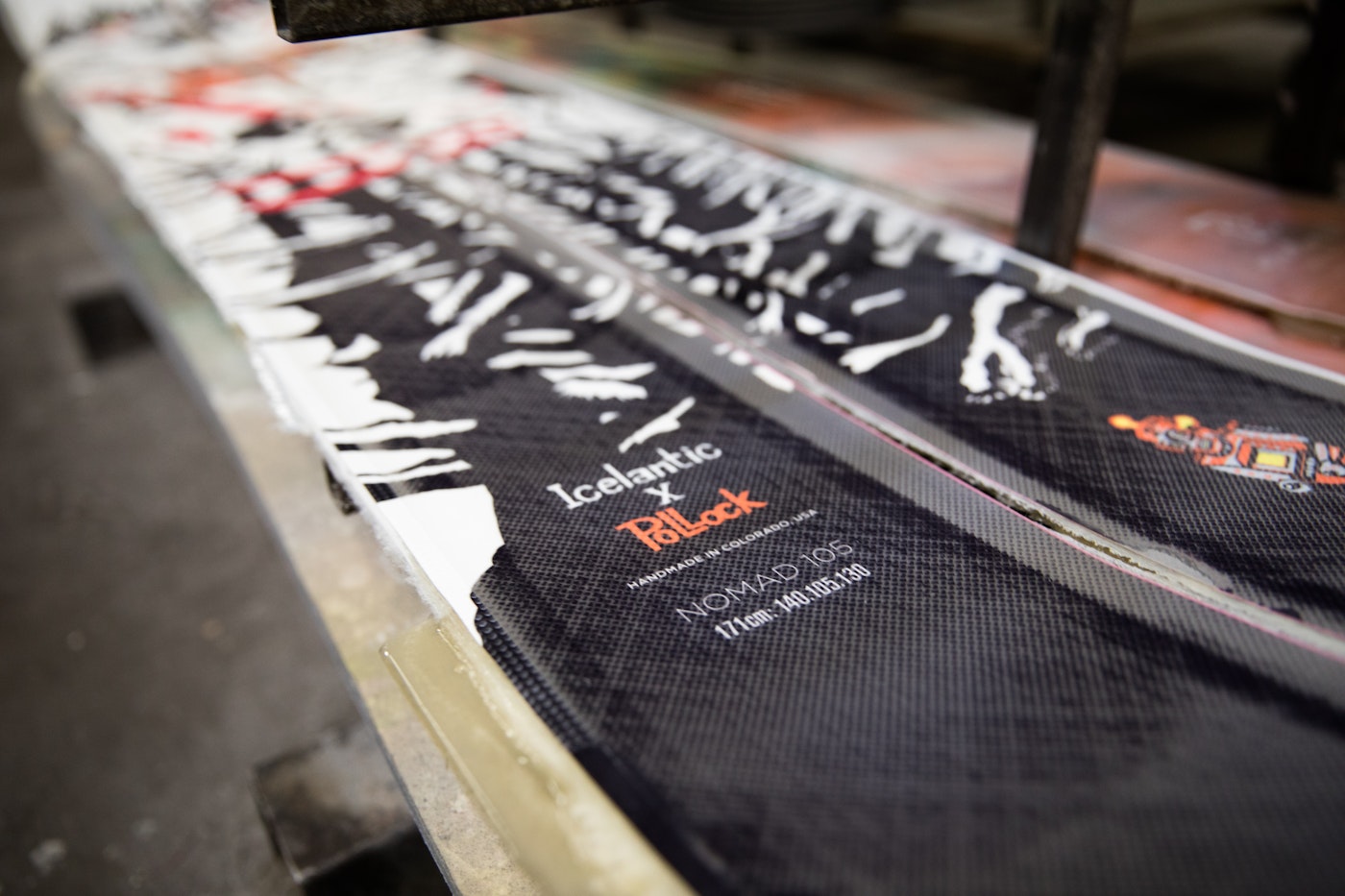
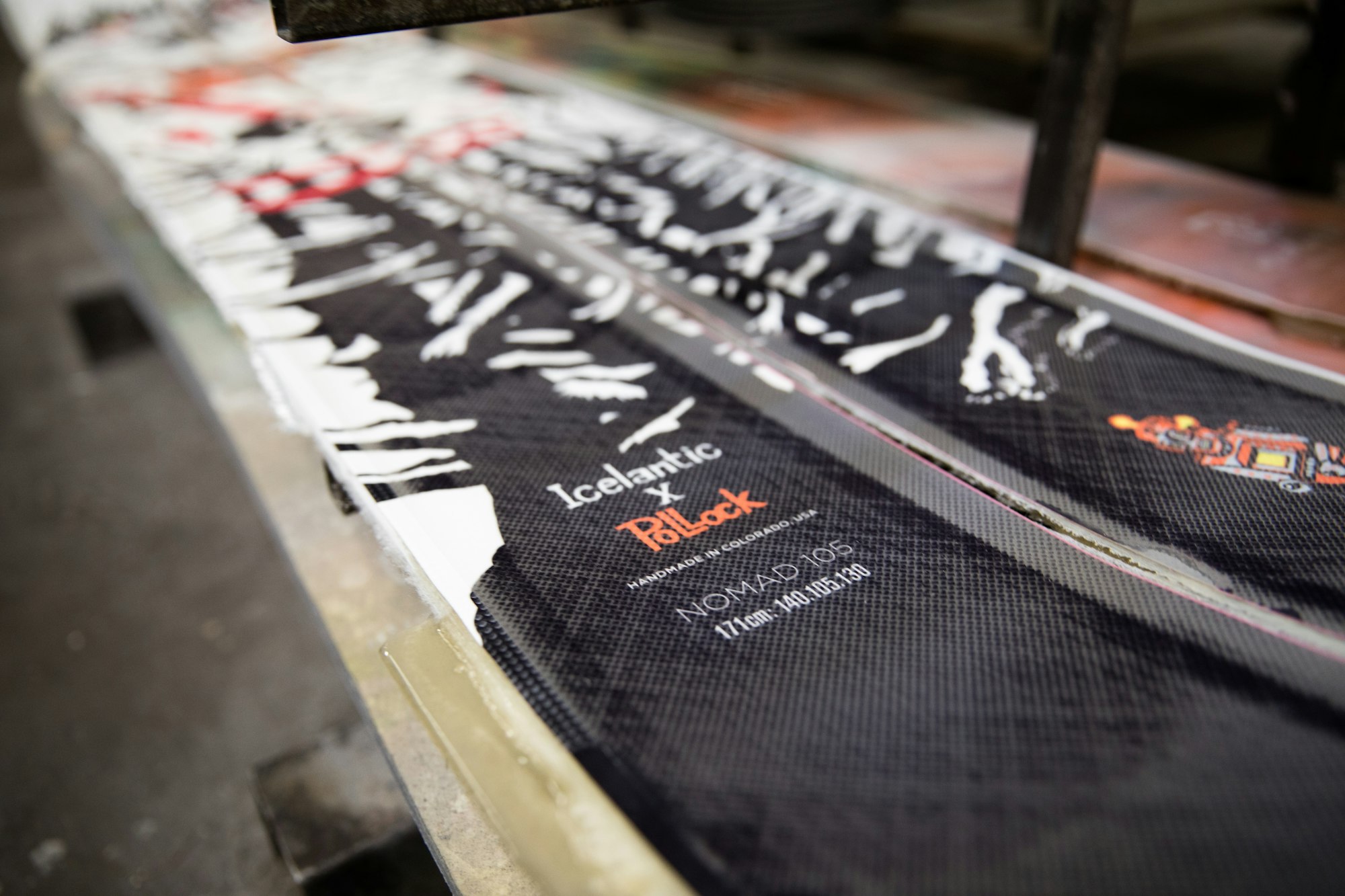
You’ve been quoted saying you’ve been “gravitating more” towards three-dimensional, kinetic art work. These skis resonate with that idea perfectly. What is it about kinetic art that intrigues you at this point in your career?
I have this CNC router that I finally got going and I’ve just been inspired by solving design problems by mostly carving out and articulating wood. I really just like making these very interesting “things” at this point. I have a computer science degree… but I’m comfortable and happiest doing physical work in my studio. Now, I’m stepping off the page and making kinetic sculptures. As a guy in his fifties, I’m bending back to other forms of design, taking an engineering approach to the artistic process.
I bent back towards science about 15 years ago. I stopped reading fiction and started reading non-fiction. I’ve been feeding myself this diet of science and it has actually helped; it has helped me build my confidence in my skills as a designer, creating things that move, which has to do with physics, and how to choose the right materials, too. From being an artist to becoming a designer, these tools are shaping me. I’m trying to press the limits of what I can do.
Are you looking for things like the Fibonacci sequence…?
It’s Fibonacci… the Golden Ratio. My very own scientific experiment has gone so far down the rabbit hole, just the pursuit of ideas—which is always feeding more ideas. But it takes up a lot of my time. Right now, I’m making these [little trinkets] and I’m just not sure what to do with them. They’re very fascinating.
That actually touches on Icelantic’s “Return to Nature” mantra quite nicely. It seems that your personal “Return to Nature” is examining the science, the physics, the universal processes that already exist in the natural world.
Right, these “natural energies”—water, wind, solar, naturally recurring patterns, some that we can’t see or feel immediately. You know, designs that are found within trees that have the same geometry as in a spiral galaxy…
That idea also crosses back into music as the Fibonacci Sequence and the Golden Ratio is used to create the pentatonic scale. These things are in architecture, too, and they exist in other art forms. I started using [these ideas] to solve a lot of two-dimensional problems, and, if you use [them] enough, you keep thinking of [them] in different contexts. You have to go back to ancient Greece for people who talked about these universal principles all the time.
But we digress. Icelantic designs and builds all of its products in the USA. As an American-born artist, what’s the importance of keeping things close to home?
I’m a big “make stuff local” guy. Local breweries, farm-to-table [restaurants], all these things that are helping rebuild cities like Pittsburgh by creating micro-economies. I always harken back to a guy from the eighteen-hundreds, Tocqueville. He was this French guy that came over to America and talked about the economy before the Industrial Age, before the robber barons had gained control of it. He talked about these very sophisticated farmers who had great machining skills. A lot of the farmers were transplants from Germany, France and Poland, and they all had certain amounts of metallurgy and tooling expertise—I want to promote us bending back to that, instead of the whole 20th-century corporate thing. Older, smaller business models, seem to be helping everything, as far as I’m concerned.
Furthering that idea, Icelantic also maintains a strong sense of community and holds multiple annual fundraisers to help local organizations.
Yeah, it’s really cool to see that type of thing happening. Phish also has a non-profit group called the Waterwheel Foundation. Nowadays, there are a lot of people, organizations and companies that are finding interesting ways of giving back and, really, creating new ways to be philanthropic.
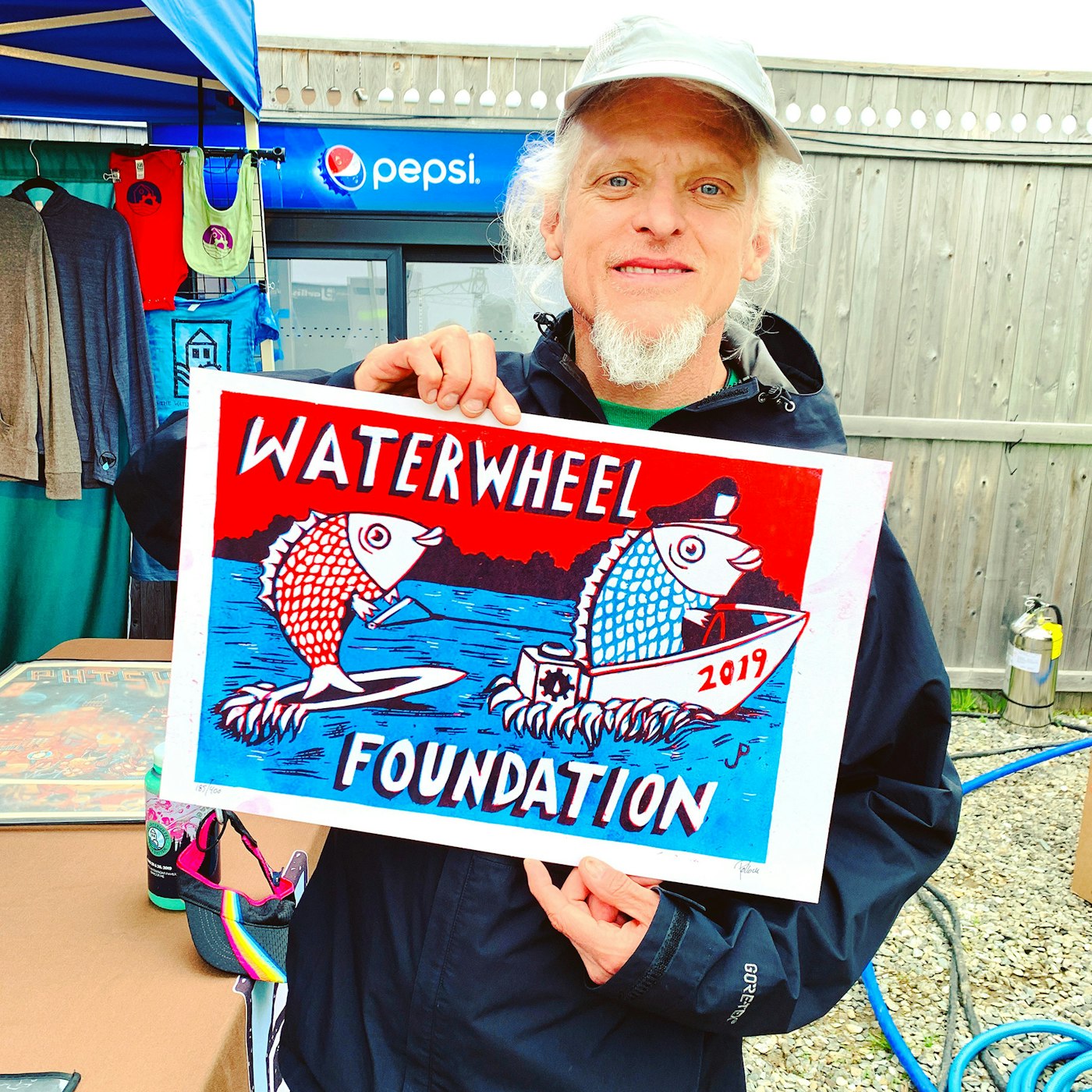
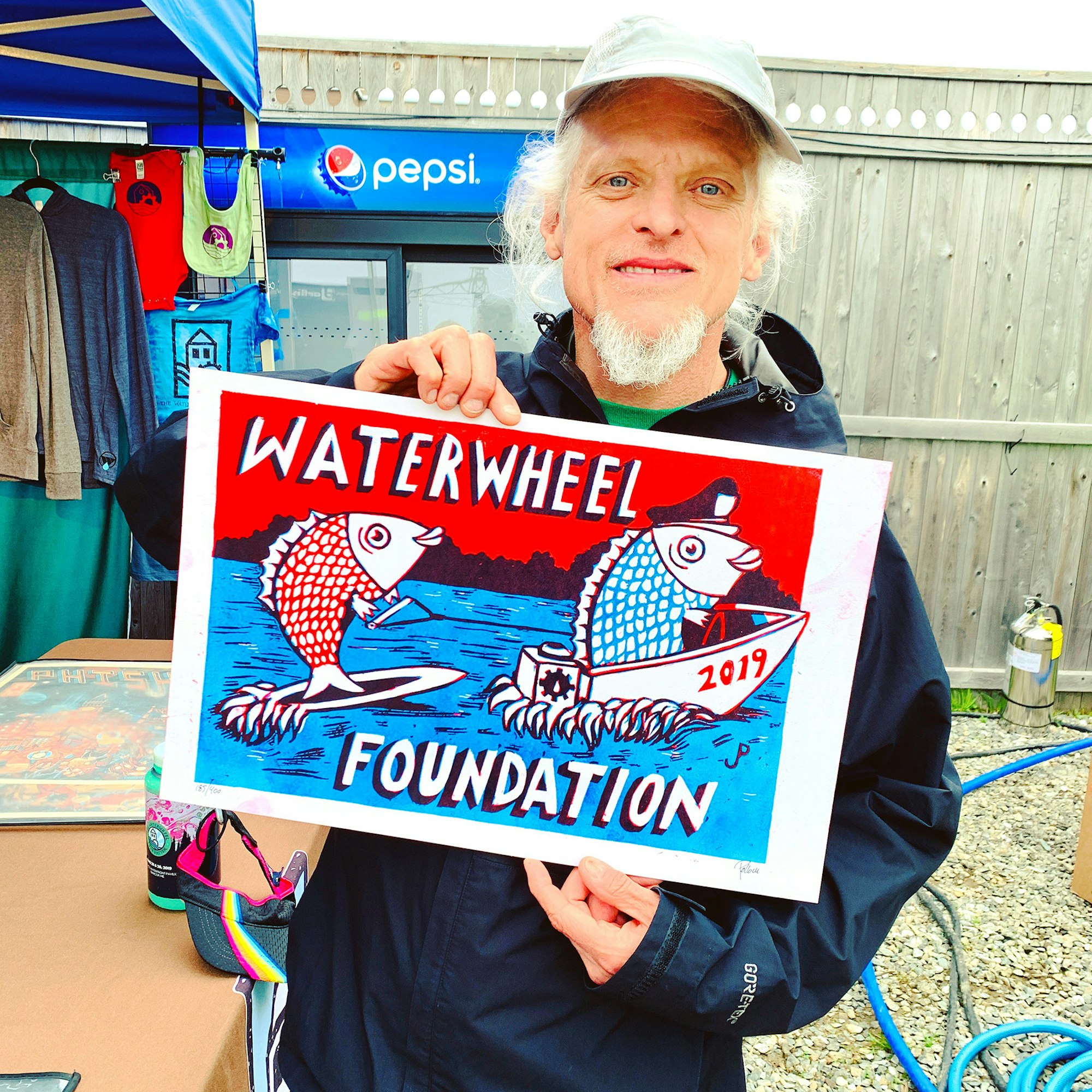
The skis you made in collaboration with Icelantic will debut at the Waterwheel Foundation booth during the Phish concerts at Dick’s Sporting Goods Park over Labor Day weekend. What exactly is the Waterwheel Foundation?
I’ve been working with the organization pretty much the entire time they’ve existed. It was initially started with the profits from selling Ben & Jerry’s “Phish Food” [ice cream]—today, all the profits still go into the cleanup of Lake Champlain. But the “touring” part of the Waterwheel Foundation is a fundraiser that helps get money to smaller non-profit organizations, usually in the area where the [Phish] concert is happening. It’s this very interesting, interconnected network of small non-profits throughout the country.
Do you think we’ll ever get to see a three-way collaboration between you, Icelantic and Phish? We could call it “The Mango Ski” or the “Winterqueen.”
[Laughs] I can be easily convinced. Maybe we call it “The Divided Ski.”

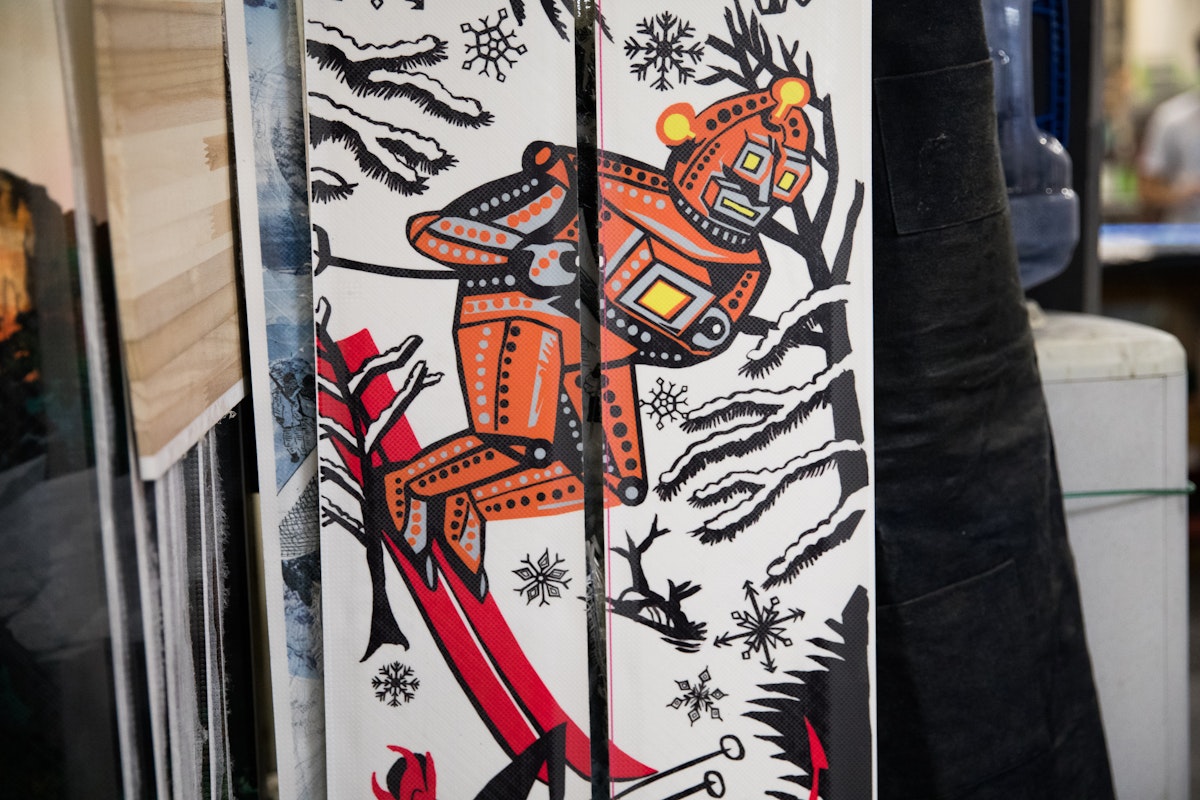
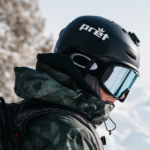
![[GIVEAWAY] Win a Head-to-Toe Ski Setup from IFSA](https://www.datocms-assets.com/163516/1765920344-ifsa.jpg?w=200&h=200&fit=crop)
![[GIVEAWAY] Win a Legendary Ski Trip with Icelantic's Road to the Rocks](https://www.datocms-assets.com/163516/1765233064-r2r26_freeskier_leaderboard1.jpg?w=200&h=200&fit=crop)
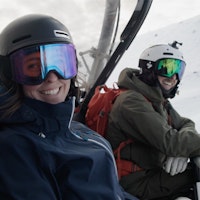
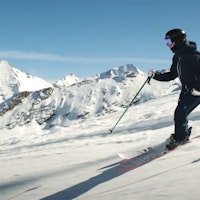
![[GIVEAWAY] Win a Legendary Ski Trip with Icelantic's Road to the Rocks](https://www.datocms-assets.com/163516/1765233064-r2r26_freeskier_leaderboard1.jpg?auto=format&w=400&h=300&fit=crop&crop=faces,entropy)
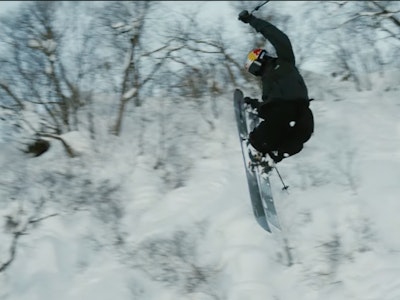

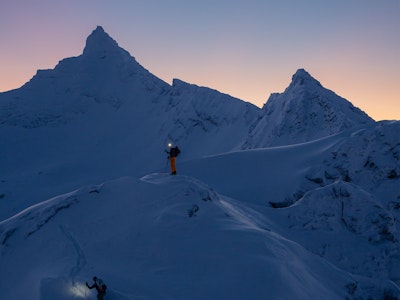
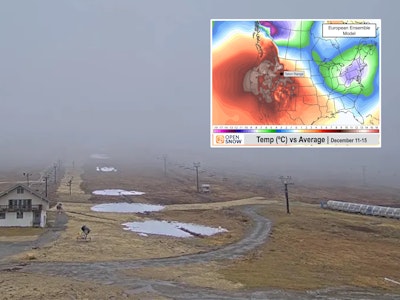
![[GIVEAWAY] Win a Head-to-Toe Ski Setup from IFSA](https://www.datocms-assets.com/163516/1765920344-ifsa.jpg?auto=format&w=400&h=300&fit=crop&crop=faces,entropy)
